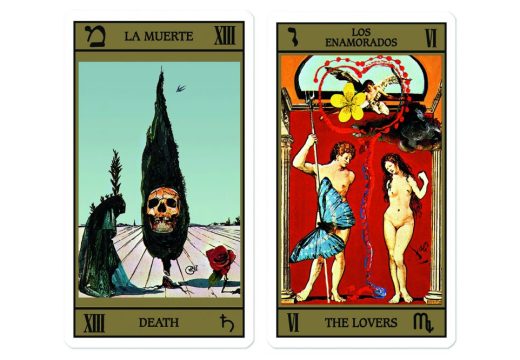How to be an Artist by Jerry Saltz, the American art critic, is decorated with endorsements from the likes of Grayson Perry (‘I wish I had read these rules forty years ago and carried them around like a bible’) and Tracey Emin (‘most of the time [being an artist] hurts. This book will help the pain’). Its pages are packed with upbeat advice and exercises for the aspiring creative, alongside compelling insights into Saltz’s attitudes to artists and to art itself (see rule 29, Artists are Cats. Art is a Dog).
The colourful, pocket-sized handbook is an expanded version of an article Saltz wrote for New York magazine in 2018, which contained ‘33 rules to take you from clueless amateur to generational talent (or at least help you live life a little more creatively)’. The book contains 63 of these rules, each covering about a page and a half. These are organised into six ‘steps’, as Saltz terms them:
1) You are a Total Amateur
2) How to Actually Begin
3) Learn to think like an Artist
4) Enter the Art World
5) Survive the Art World
6) Attain Galactic Brain
Included throughout are quotations from celebrities, artists and philosophers: Adele, Picasso, Einstein, among others. There are illustrations galore: masterworks by Edward Hopper and Rembrandt; Navajo sand paintings; and a number of wonderful photographs of artists in their studios.

Fling, Dribble, and Drip (1970), Lynda Benglis, frontispiece of Jerry Saltz’s How to be an Artist (2020). Photo: Henry Groskinsky/The LIFE Picture Collection via Getty Images. Courtesy Ilex Press
In these pages, artists emerge as beings who ‘hate to be asked what their work means’, ‘led by something outside’ themselves, ‘material poets’, with the imagination as a ‘creed’. There is something of the post-Vasari myth of the tortured artist-philosopher in these descriptions, and a note of adulation that veers close to reverence. One section, describing the artistic practice of a two-year-old, even ends with the line, ‘Can I get an amen?’
For all its talk of freedom, the book is undeniably doctrinal. For instance, rule 40 states: ‘Don’t define yourself by a single medium.’ But what if you want to? Dürer, for instance, didn’t become the world’s greatest engraver by spreading himself across sculpture, printmaking and enamelling. For some, connecting with a single medium, hunkering down with it, liberates the imagination, leads to freedom within form and brings, with time, the satisfaction of a manual skill. And while the examples in this book leap from Indian kolam painting to Manet, implying that its messages are universal, the illustrations selected are governed by a distinct visual aesthetic. We see little visual reference to the artistic traditions of medieval Europe, for instance, or east Asia.
Overall, How to be an Artist has much to recommend it. Saltz is to be applauded for his direct confrontation of issues of personal trauma, systemic sexism and financial hardship – and for proclaiming, in the fifth tip, that ‘All art comes from love’. Joy is palpable in these pages. We are told to connect with our raw emotions, to admire the constant creative work our artist’s brain is undertaking, to learn from our mistakes and to shake off criticism. Saltz even tells us to dance. We need such thinking right now.
Amy Jeffs is an art historian who is writing Storyland: a New Mythology of Britain for Riverrun Books, Quercus, and illustrating it with 50 linocut prints.
How to be an Artist by Jerry Saltz is published by Ilex Press.
Unlimited access from just $16 every 3 months
Subscribe to get unlimited and exclusive access to the top art stories, interviews and exhibition reviews.














![Masterpiece [Re]discovery 2022. Photo: Ben Fisher Photography, courtesy of Masterpiece London](http://www.apollo-magazine.com/wp-content/uploads/2022/07/MPL2022_4263.jpg)
It’s time for the government of London to return to its rightful home